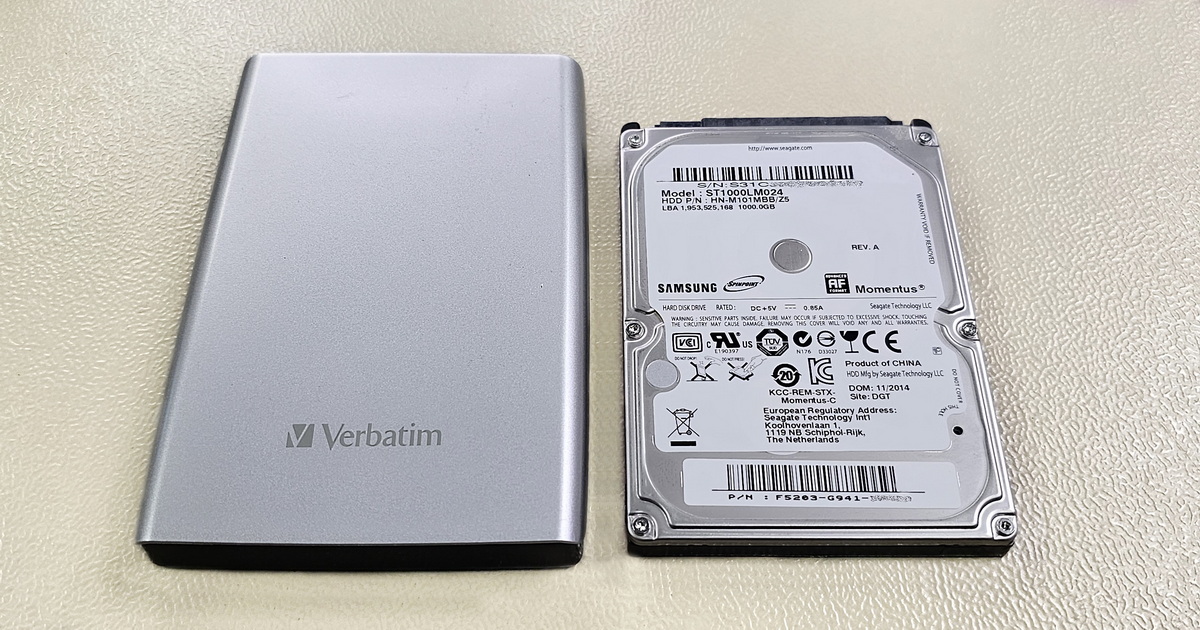Most LaCie external drives used by users today are actually Seagate drives. Seagate bought the LaCie brand in 2012. Inside the external cases of this brand, there are no premium hard drives that otherwise wouldn't make it to market. They are the same Seagate hard drives that Seagate sells under its main brand, similar to brands like Adata. The purpose of this text is not to discredit the LaCie brand but to highlight the fact that a perfect and indestructible data medium does not exist.
Common Issues with LaCie/Seagate External Drives
Recovering important files from a drive may be the reason you're browsing the internet for various reasons. Spontaneous drive failure, drop or impact, user error, damage from a short circuit or overvoltage, water damage, malicious software attack... If you don't know how to recover data from the drive yourself, use our free consultation and media diagnostics.

+420 608 177 773
Spontaneous failure can be caused by service data error, data platter errors, magnetic head failure, file system damage, or even a failure of one of the hard drive's electronics. If the drive appears to be functioning normally but data is inaccessible, first try a different cable or computer. You can also try a data recovery program, such as Recuva, EaseUS Data Recovery, or Disk Drill. If you fail or the drive's condition changes, contact us. More information on file recovery from a drive after spontaneous failure can be found here.
Drop or strong impact can have serious consequences for hard drives of any brand and construction. The best procedure if you suspect mechanical damage is not to turn on the drive at all and seek professional help. However, probably 99% of users will try the drive after a drop or impact. If the data is accessible, back up everything important without delay. In the worse case, the drive may no longer connect and data cannot be copied. Then the only advice is not to turn on the drive again and seek professional help. Clicking, ticking, or grinding sounds mean that the drive cannot initialize, read service data from the platters, or communicate with the computer. If this occurs after a drop or impact, there is no room for experiments. However, a hard drive with mechanical damage does not necessarily have to have such dramatic symptoms. Data may be inaccessible even with seemingly normal drive behavior. More information on data recovery from a drive after mechanical damage can be found here.
User Error - deleted data, formatted disk, abnormal data handling. For modern hard drives with Shingled Magnetic Recording (SMR), it is no longer true that data remains on the disk until it is overwritten. SMR drives internally process deleted data and prepare free capacity for further use. Therefore, before attempting to recover data on your own, read this article, or contact us.
Anyway, a user error is mainly not having data backed up, because otherwise, they wouldn't need to search for information on data and file recovery from a disk. But if you are dealing with file recovery from a disk, you can take advantage of our free diagnostics, consultation, and collection service. With considered steps, you can save your valuable data.
Less Common Problems with LaCie Data Recovery
Overvoltage or Short Circuit can have an external cause, or the power supply of the computer/device may be at fault. The drive's electronics can be damaged, and if the drive is operating at the time, the magnetic/read heads or data platters may also be affected. In this type of damage, the drive simply does not work. Merely replacing the drive's electronics does not help, because most modern drives have unique service data on the electronics that need reprogramming. Moreover, if the drive's magnetic heads or data platters were damaged during the failure and the drive was turned on without a prior visual inspection, more severe damage could occur. More information on data recovery and file restoration from a drive damaged by a short circuit or overvoltage can be found here.
Water Damage - flood, deluge, an enthusiastic flower lover with a dangerous watering can. Water is not friendly to external hard drives, and even more robust drives with increased resistance to impact and dirt are not waterproof. Sometimes water damage is entirely evident (such as a flooded drive after a flood), other times oxidation may occur gradually and the defect manifests later. It is often believed that hard drives are vacuum-sealed and would logically be somewhat resistant to water ingress. Hard drives do not have a vacuum. The vast majority of hard drives have a so-called "breathing hole," which serves to equalize pressure inside the drive. If the drive is in water for an extended period, especially in dirty water, it can be severely damaged. However, in most cases, data from a drive affected by flooding, deluge, or unwanted immersion can be recovered. It is crucial not to turn on such a damaged drive and to seek professional help as soon as possible. More information on data recovery and file restoration from a water-damaged drive can be found here.
Viruses and Malware can also cause data to be inaccessible on external storage. Malicious software can intentionally damage data, encrypt it for ransom, or otherwise misuse it. If you suspect any storage is infected with malicious software, turn off the computer or device and contact us. More information can be found here.
Data recovery from all types of data media is our field. Do not hesitate to contact us for consultation, diagnostics, or free collection. A considered step in the event of a disk failure, whether LaCie or any other brand, can save your valuable data. Examples of practical data recovery cases can be found in our BLOG.










